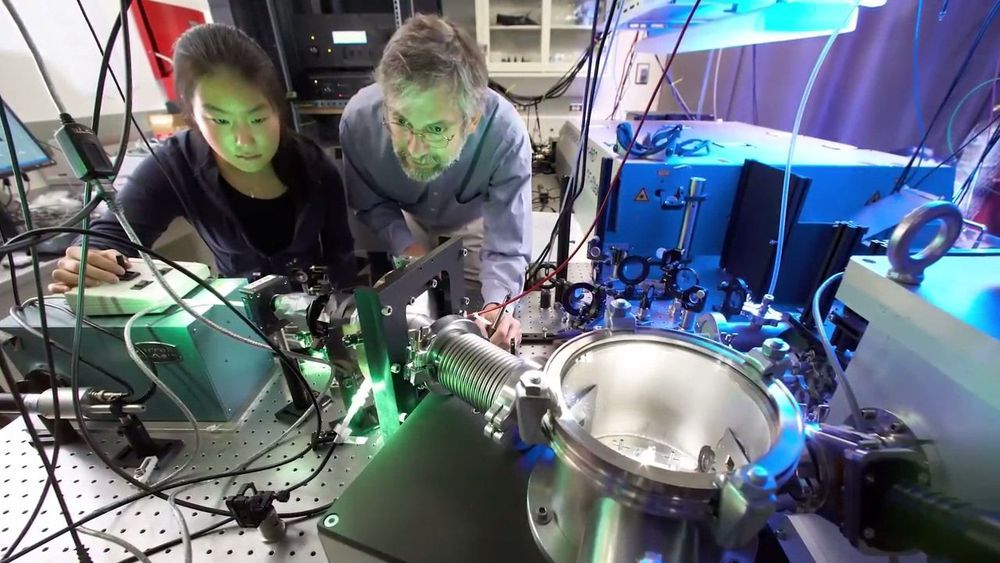Nov 10, 2019
Artificial Intelligence Is Too Important to Leave to Google and Facebook Alone
Posted by Genevieve Klien in category: robotics/AI
Let’s develop a public research consortium to take on useful projects that have no commercial prospects.
Let’s develop a public research consortium to take on useful projects that have no commercial prospects.
A fingerprint test developed by British scientists could tell if patients are skipping medication.
Forgetting or failing to take drugs can have serious consequences, particularly for people suffering from chronic conditions or those with mental health issues.
Non-adherence to prescribed medication is a major problem for the NHS, with some studies showing only 50 per cent of people take long-term drugs as instructed, at a cost of around £300 million in wasted medicine each year.
A brain receptor believed to be linked to negative moods has been discovered in a part of the brain that contributes to pain. The paper is published in Science.
Stadelmann said that Komodo is similar to Ethereum but it is 100% independent, free and open-sourced platform.
“As the world is getting digitised, it is all based on binary digits. Binary digits can have either 1 (on) or 0 (off). We don’t speak of bits anymore but quantum qubits or quantum bits, which can be in both 1 and 0 states at the same time. This qubit can attain so many states at the same time and they are also able to process calculations at a much faster rate than classical computers,” he said.
As a blockchain platform, Stadelmann said that Komodo is trying to solve the problem and has implemented quantum-safe cryptographic solutions for the past couple of years which will not be able to crack cryptographic signatures.
Innovative nanosheets made from equal parts of hydrogen and boron have a greater capacity to store and release hydrogen compared with conventional metal-based materials.
Circa 2018
Researchers at MIT (Cambridge, MA) and at Brookhaven National Laboratory (Upton, NY) have demonstrated a new approach to controlling magnetism in a microchip that could lead to next-generation memory and logic devices that consume drastically less power than current versions.
face_with_colon_three
The tiny hydra, a freshwater invertebrate related to jellyfish and corals, has an amazing ability to renew its cells and regenerate damaged tissue. Cut a hydra in half, and it will regenerate its body and nervous system in a couple of days. Researchers at the University of California, Davis have now traced the fate of hydra’s cells, revealing how three lines of stem cells become nerves, muscles or other tissues.
Celina Juliano, assistant professor in the UC Davis Department of Molecular and Cellular Biology, project scientist Stefan Siebert and colleagues including Jeff Farrell, a postdoctoral researcher at Harvard University, sequenced the RNA transcripts of 25,000 single hydra cells to follow the genetic trajectory of nearly all differentiated cell types.
“The beauty of single-cell sequencing and why this is such a big deal for developmental biologists is that we can actually capture the genes that are expressed as cells differentiate from stem cells into their different cell types,” Juliano said.
Circa 2008
A recent study demonstrates that the use of an acute, localized static magnetic field of moderate strength can result in significant reduction of swelling when applied immediately after an inflammatory injury. Magnets have been touted for their healing properties since ancient Greece. Magnetic therapy is still widely used today as an alternative method for treating a number of conditions, from arthritis to depression, but there hasn’t been scientific proof that magnets can heal.
Lack of regulation and widespread public acceptance have turned magnetic therapy into a $5 billion world market. Hopeful consumers buy bracelets, knee braces, shoe inserts, mattresses, and other products that are embedded with magnets based on anecdotal evidence, hoping for a non-invasive and drug-free cure to what ails them.
“The FDA regulates specific claims of medical efficacy, but in general static magnetic fields are viewed as safe,” notes Thomas Skalak, professor and chair of biomedical engineering at U.Va.

O.o.
An ultraprecise new “attoclock” helps physicists make molecular movies of ultrafast chemical reactions.
Scientists from South Australia’s Flinders University have developed a wetsuit that could protect swimmers from fatal shark attacks.
The potentially lifesaving wetsuit, made from a thicker fabric, could help reduce blood loss, the main cause of death in shark attacks.
